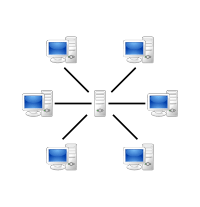
A portion of a physical disk that functions like a completely separate physical disk. Partitions allow physical disks to function as multiple separate storage units for isolating operating systems from applications data on a single-boot system or for isolating operating systems from one another on a multiboot system.
Disks can have two types of partitions:
You can create partitions by using the fdisk command in MS-DOS and all versions of Microsoft Windows, by using Disk Administrator in Windows NT, or by using the Disk Management tool in Windows 2000. Using the fdisk command, you can create one primary partition and one extended partition. Disk Administrator can create up to four primary partitions or three primary and one extended partition. Disk Management can create partitions only on basic disks, not on dynamic disks.